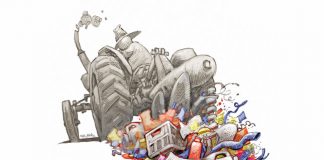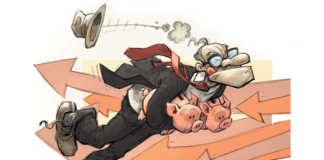Reminding us that more than 500 000 South Africans could die of Aids this year, Victor Thindisa of the Department of Agricultural Economics at the University of Limpopo looks at the pandemic’s effect on household farm labour in rural communities.
With at least two members of every household – often including the main breadwinner – of farmworkers surveyed in a study in the Limpopo Lowveld already HIV positive, the provincial and national governments should work more closely with community-based organisations and NGOs that are experienced in dealing with HIV/Aids-affected people.
The study was done in rural Mabele, Nwajaheni and Khubu – districts that lie within a radius of 30km of Giyani township, which has one of the highest rates (35%) in the province. There, on average, three household members work full time on farms.
The study showed that the major impact of HIV/Aids on a farming household (an economic unit consisting of a group of persons who live and dine together in the same dwelling) is shortage of household farm labour. When infected household members become too sick to work on the farm the household loses income, and family members lose productive time while caring for the ill. Less land is cultivated and yields drop as recommended agronomic practices such as early planting, weeding, fertiliser application, disease and pest control, and timely harvest are neglected. There is a shift from cash crops to feed crops. The decline in total household income makes it difficult for farmworkers to pay for healthcare and agricultural inputs, or to save money – exacerbating the vicious cycle of poverty in which the affected households are caught, which will deepen as the pandemic takes its course.
According to the Joint United Nations Programme on HIV/Aids (UNAIDS), the number of children younger than 15 years orphaned as a result of Aids deaths, could rise to nearly two million by 2010.
Terrible state of affairs
The impact on farms could be terrible. According to the latest figures, South Africa has 914 473 farmworkers living with their families. represents as many as six million people. Every farmworker’s income supports another five people – a ratio that is probably even higher in other developing countries. As infected individuals and affected children belong to the same household, an even larger number of people are touched by the epidemic in some way.
Current alleviation activities tend to be once-off, informal attempts at education or awareness on Aids. Instead, government must implement comprehensive programmes starting with education and building awareness, leading to peer counselling, voluntary counselling, testing and treatment. As a result of the social stigma attached to the pandemic, identifying Aids-affected members is a very difficult task in most South African communities.
Household members must be continuously reminded of the consequences of their actions. Once diagnosed with HIV/Aids they should get the necessary support. This should include the establishment of community support systems that will assist families to take care of members with Aids, and contributing to funeral expenses. Communities should be helped to set up feeding centres for sick children and adults. Furthermore, information brochures in various languages on Aids awareness and home-based care of the sick should be made available.
Awareness and knowledge of the pandemic is critical in helping farming communities understand what precautions to take to protect themselves from the disease.
The lower level of access to media channels in rural districts plays a role in the higher rate of infection, and thus leads to more shortages in household farm labour. Finally, to sustain production and food security, communities should adopt strategies that minimise reduction of household farm labour input. This can be done by using more animal draught power and minimum tillage. – Roelof Bezuidenhout |fw













